2018 Policy Agenda Recommendations Would Improve Financial Stability for Millions of Americans if Enacted
The Child Care for Working Families Act is Top Priority
WASHINGTON, Feb. 7, 2018 - With millions of American families struggling to afford and access quality child care, and early childhood education costs outpacing college tuition, Child Care Aware® of America today urged Congress to take swift action to relieve this financial burden. The organization's 2018 policy agenda calls on Congress to pass the Child Care for Working Families Act of 2017, provide at least a $1.4 billion increase to Child Care and Development Block Grants (CCDBG) over 2018 levels, and strengthen quality standards for care provided under the Temporary Assistance for Needy Families program. These policy recommendations follow Child Care Aware® of America's release of national and county-level data showing that child care is unaffordable in all 50 states. Massachusetts county-level data supplement and map can be found here.









